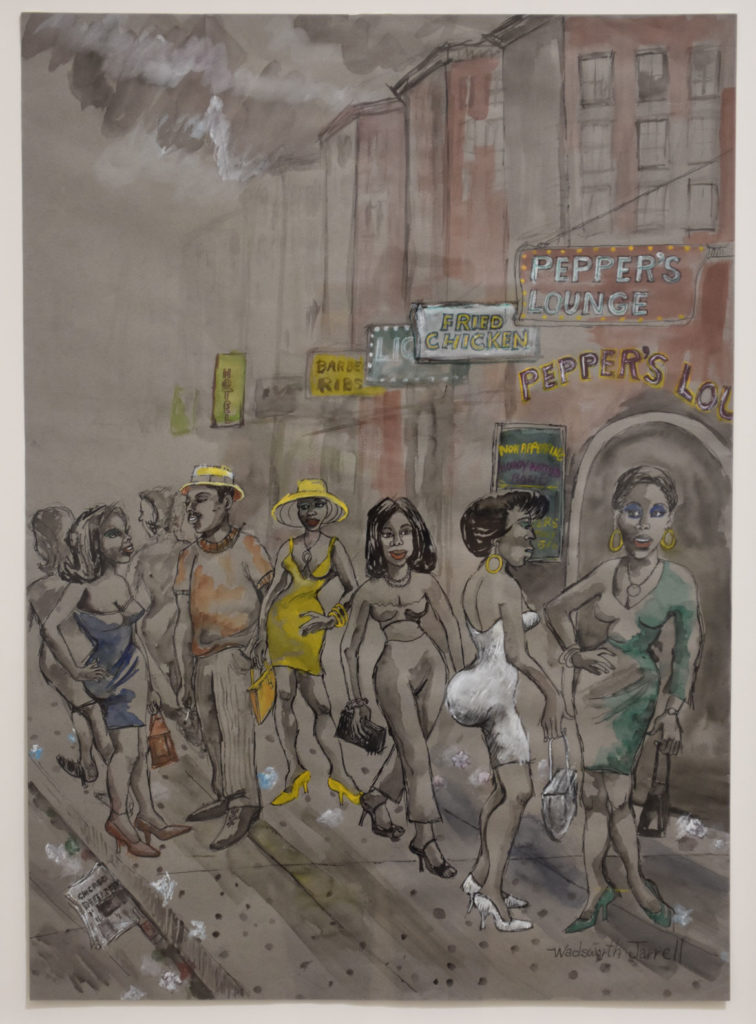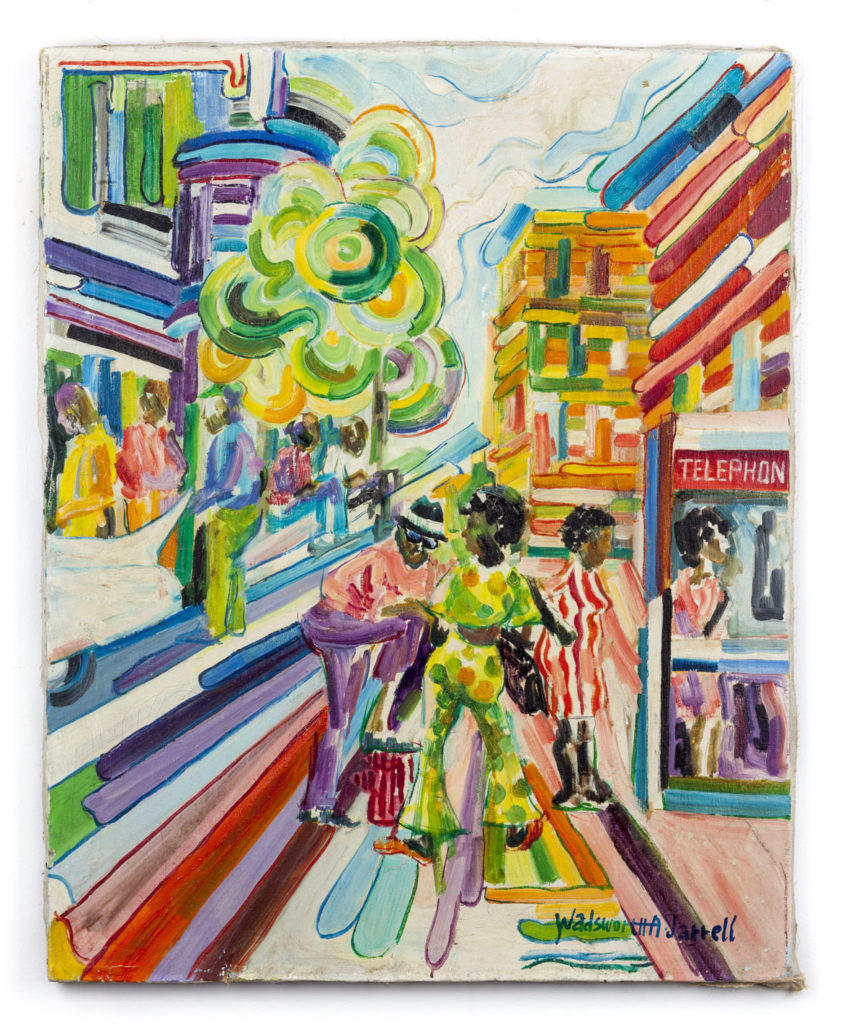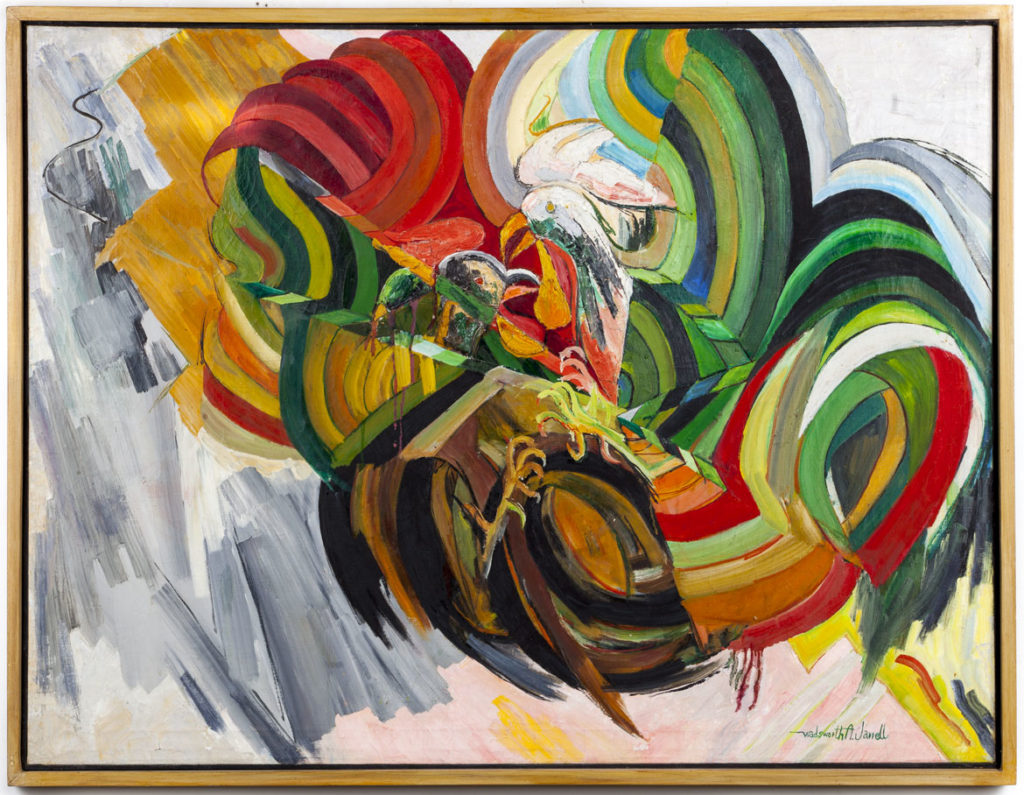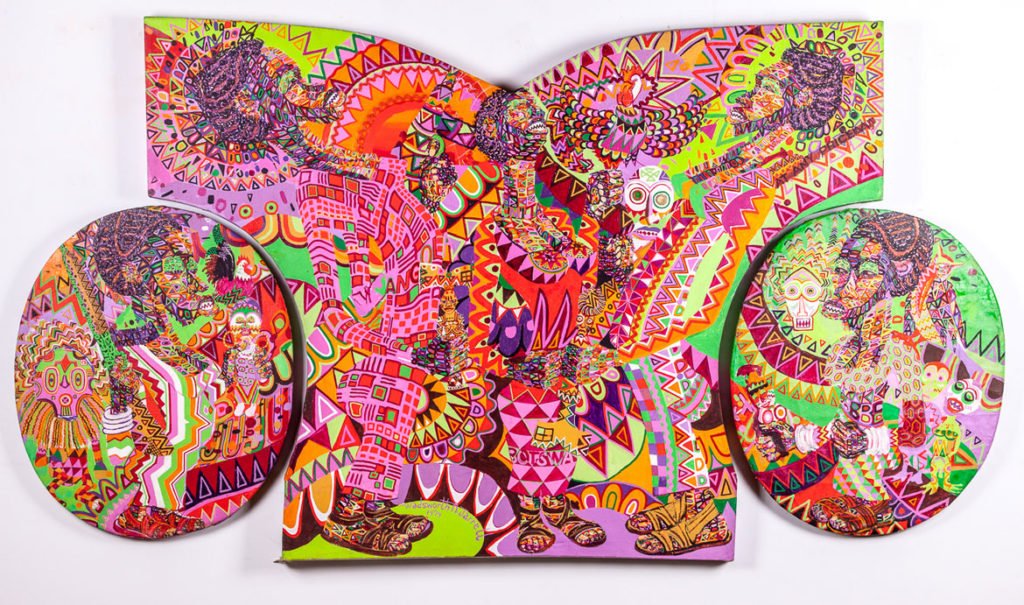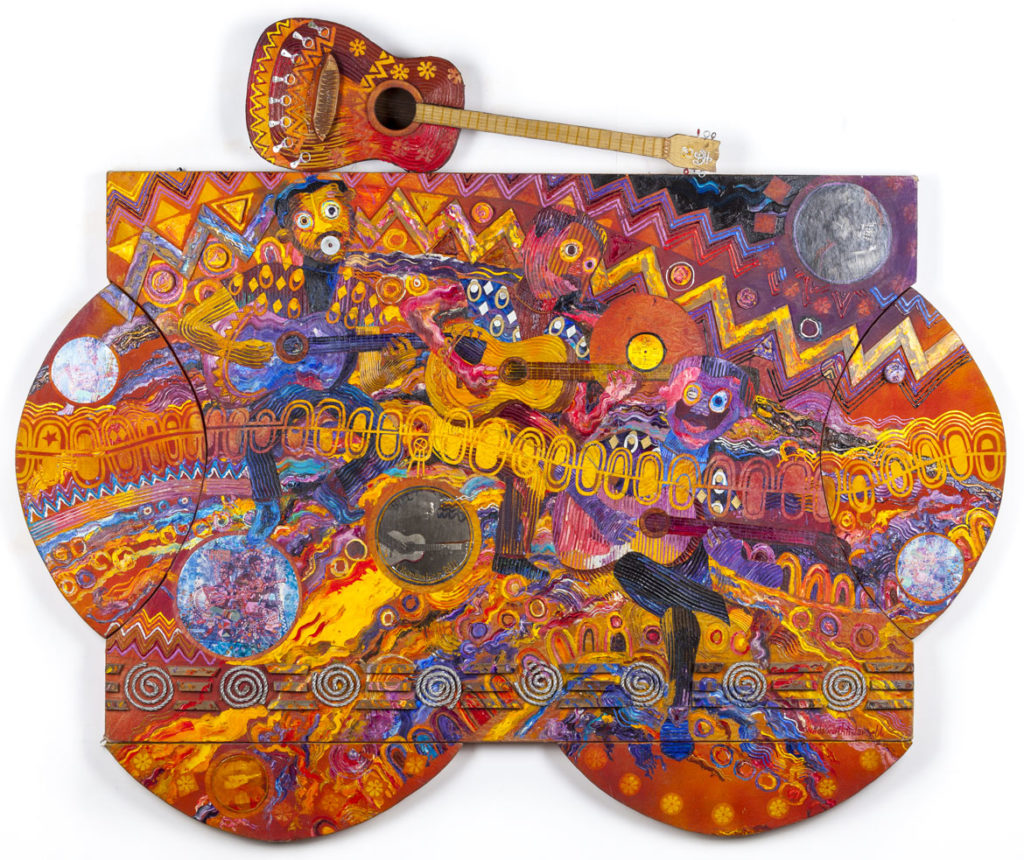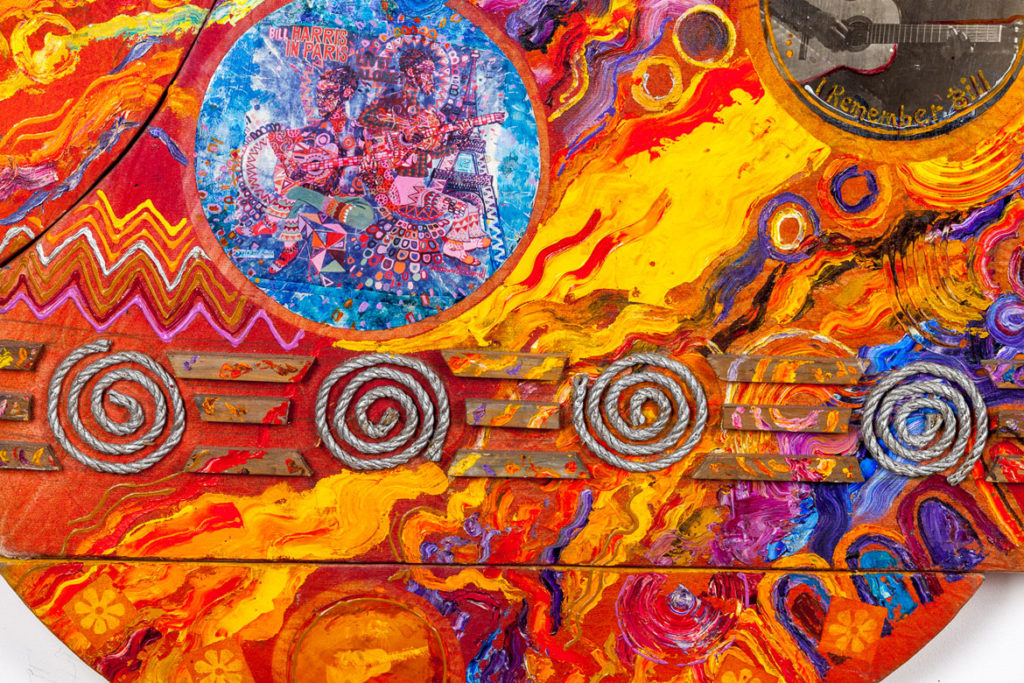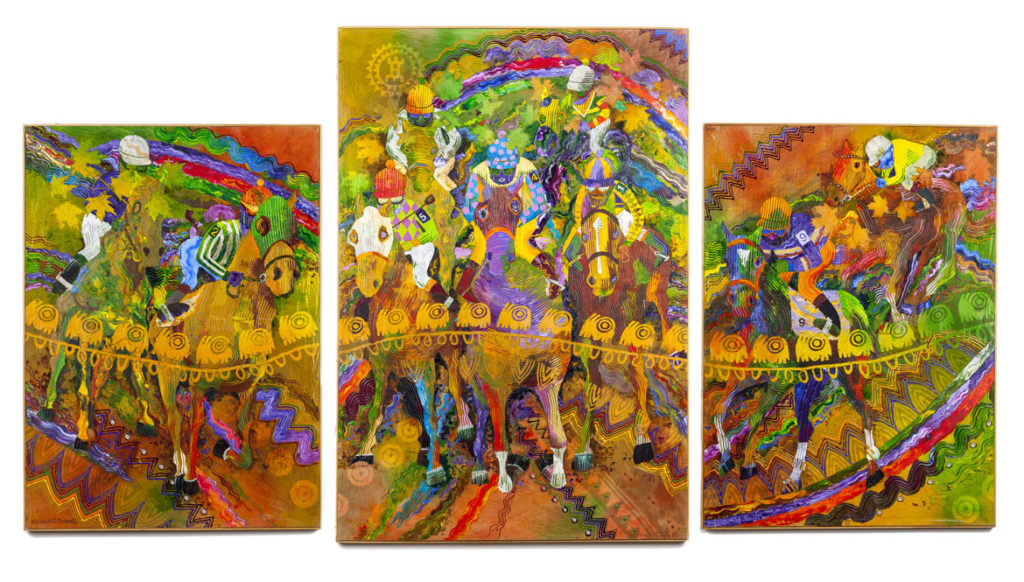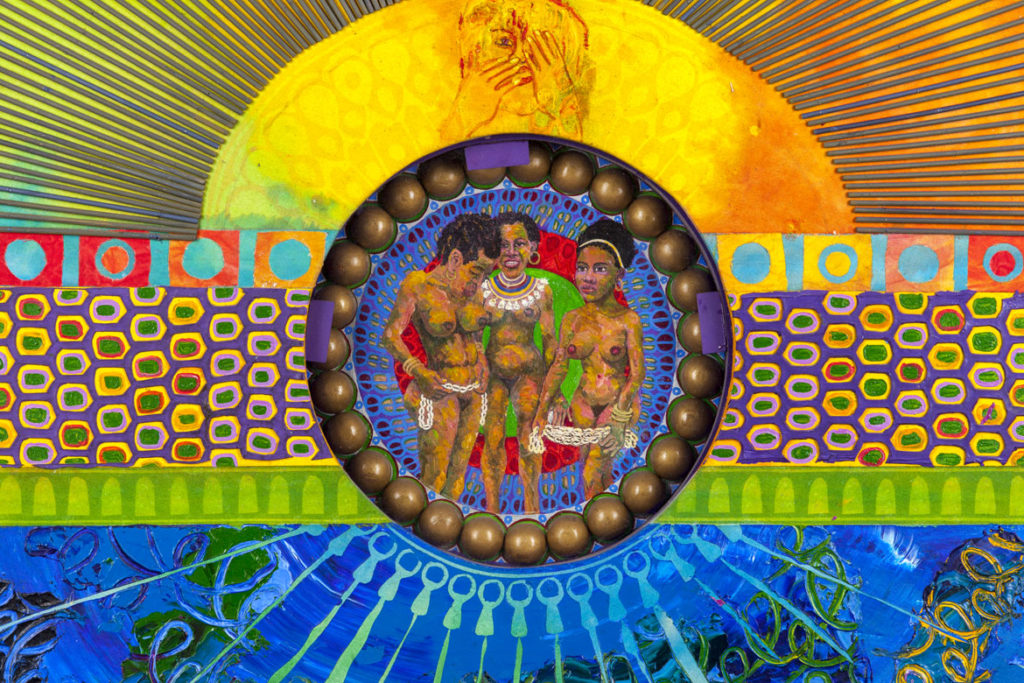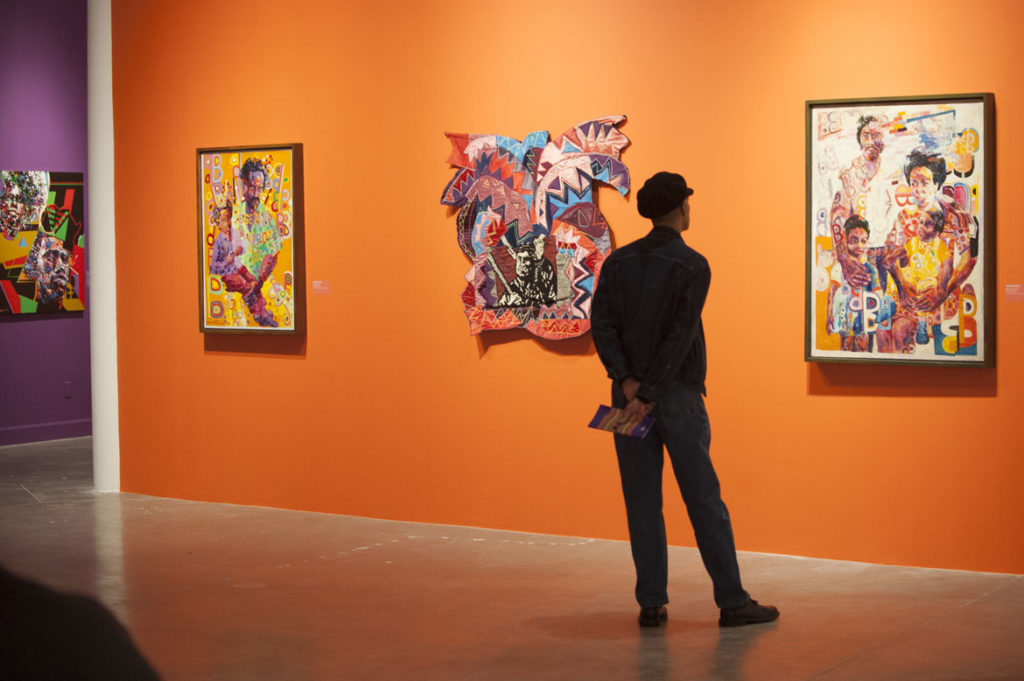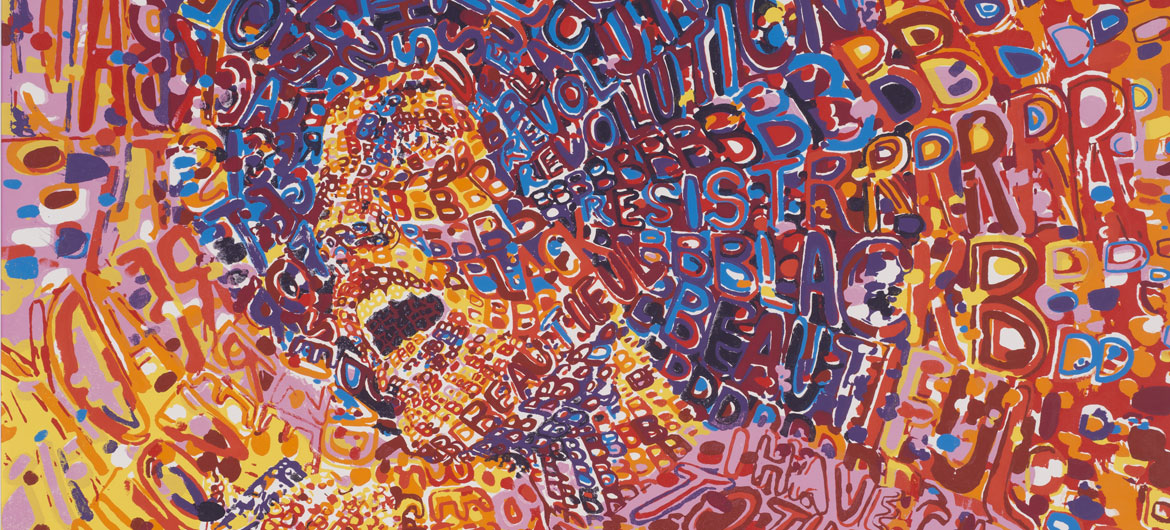“African people are the forerunners, innovators, creators, the hip. African people are my motivation,” Wadsworth Jarrell, one of the founders of AfriCOBRA (African Commune of Bad Relevant Artists), said in an artist statement for an exhibition of the African American art collective at the University of Massachusetts at Amherst in September 1973. “…My role is to make social imagery to intrude upon the thoughts to jar the senses of African people. To produce an Art which is as warm and awesome as the songs and prayers of Sunday Morning Baptist meeting. Art that’s getting into the color and sound of those songs and prayers. An art that African people can relate to.”
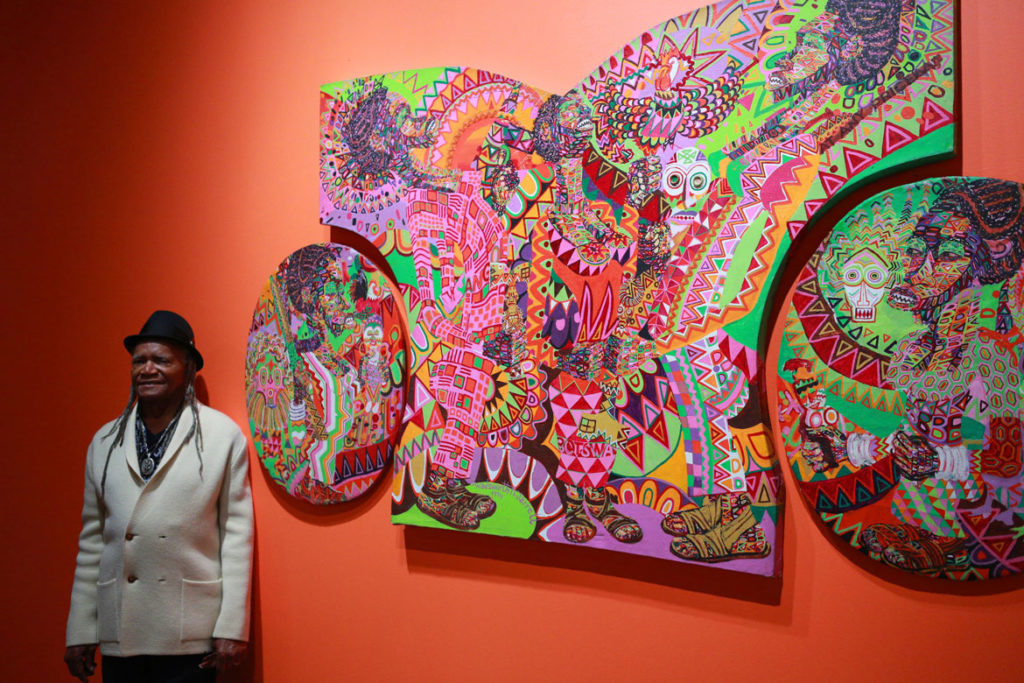
Jarrell is best known for his work with AfriCOBRA, considered one of the most influential Black art movements of the past century. The collective is celebrated in “AfriCOBRA: Nation Time” at the Venice Biennale through Nov. 24, 2019, a version of the survey featured at the Museum of Contemporary Art in North Miami this spring. And it’s one of the groups highlighted in “Soul of a Nation: Art in the Age of Black Power,” which was organized by London’sTate Modern, and has toured from the Crystal Bridges Museum of American Art in Arkansas to the Brooklyn Museum and now Los Angeles’ Broad museum, through Sept. 1, 2019.
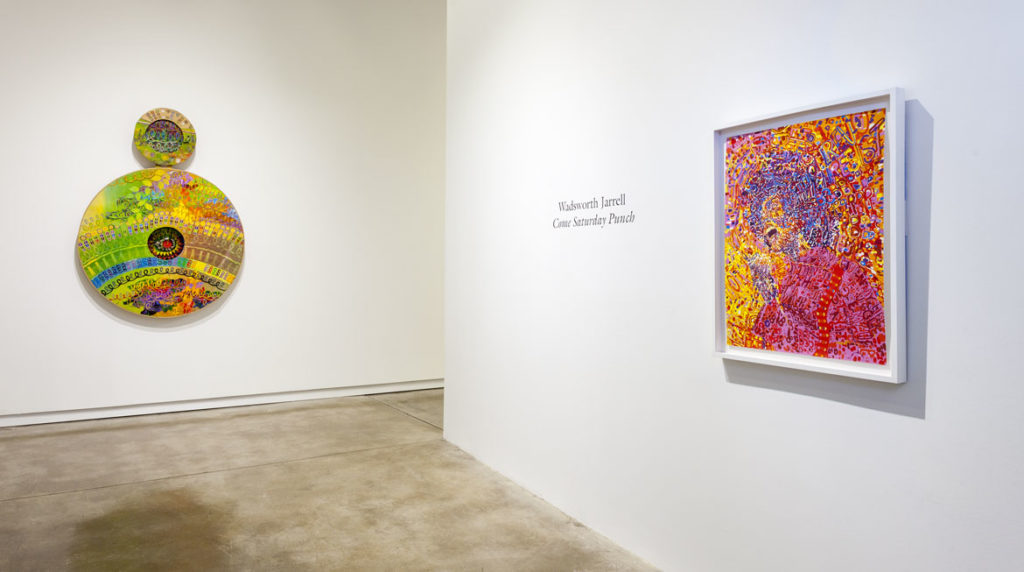
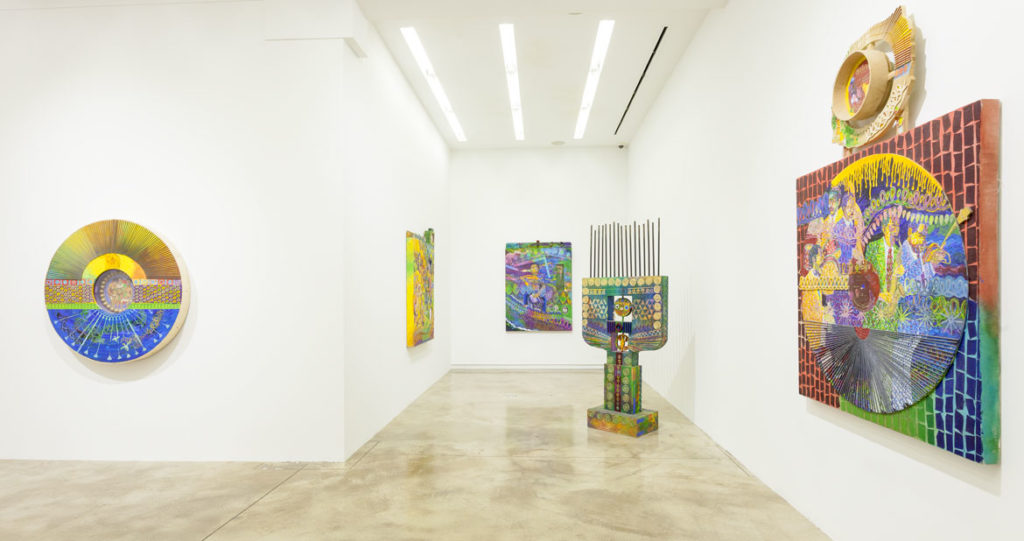
“Come Sunday Punch,” a mini-retrospective at Chicago’s Kavi Gupta gallery from July 13 to Aug. 3, 2019, detailed his artistic road to AfriCOBRA and what he’s made since.
Jarrell grew up on a farm in Albany, Georgia, where he was born in 1929, the youngest of six children of Tabitha and Soloman Marcus Jarrell, a furniture maker. After service in the U.S. Army, he moved to Chicago in the 1940s. While working at the International Paint factory, he took night classes at the School of the Art Institute of Chicago. He enrolled full-time in 1954 and graduated in ’58.
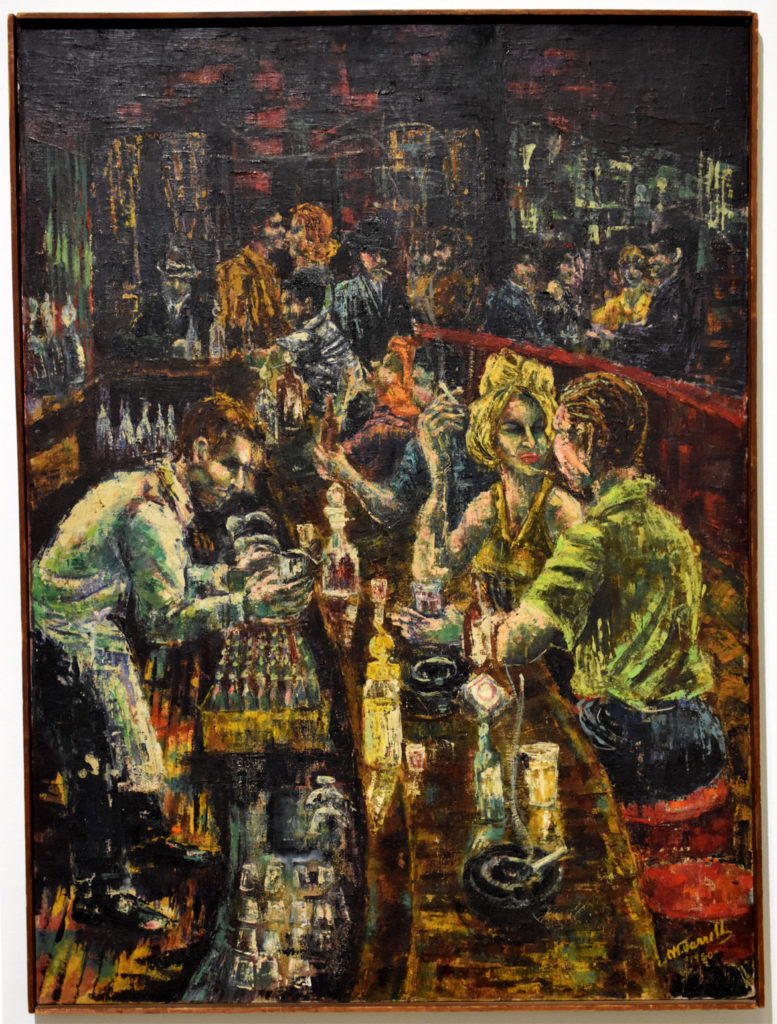
Jarrell worked as a photographer and continued his painting. His canvases were often gritty, expressionist renderings of life in Chicago. His 1958 painting “Neon Row,” exhibited in the 2018 exhibition “The Time Is Now! Art Worlds of Chicago’s South Side, 1960-1980” at the University of Chicago’s Smart Museum of Art, showed a dapper Black crowd filling the nighttime sidewalks under glowing South Side jazz club marquees. His 1960 “Untitled (Nightclub Painting)” at Kavi Gupta showed a White couple flirting at the bar of a smoky club.
But from the early to mid 1960s, Jarrell moved away from these gritty nocturnal scenes of streetlife to adopt a bright, rainbow palette in paintings like “Mackin’ the Game,” 1959, and his 1966 “Portrait of Jae” at Kavi Gupta, as well as his 1966 painting “Sign of the Times,” included in “The Time Is Now,” showing rainbow stripes fanning across a composition depicting White and Black hipsters.
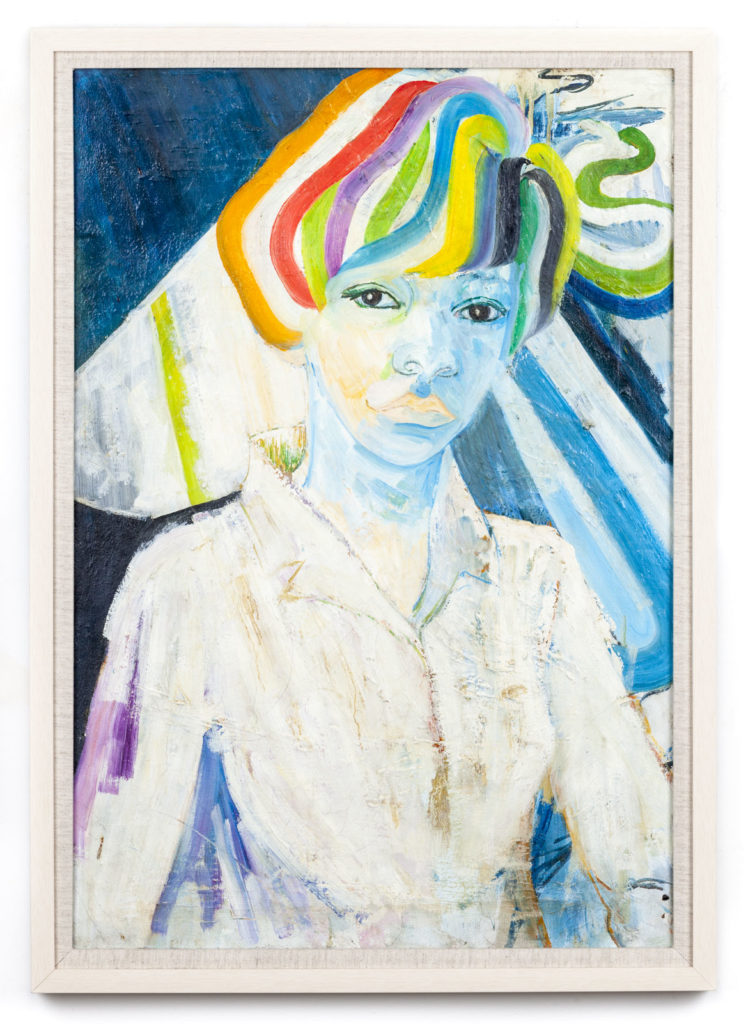
Jae (born Elaine Annette Johnson) was an artist and fashion designer that Jarrell met in the mid 1960s at Chicago’s Hyde Park Art Fair. Black artists were often segregated out of the city’s White-run art world. So outdoor art fairs became key places for African American artists to exhibit. They married in 1967.
That August, they were among the 14 African American artists—most affiliated with the Organization of Black American Culture (OBAC)—who painted a landmark 60-foot-wide mural on the side of a run-down tavern at the corner of 43rd Street and Langley Avenue on Chicago’s South Side. They called it the “Wall of Respect” and their artwork would inspire hundreds of Black Power murals all across the United States.
“The ‘Wall of Respect’ was a revolutionary act, made without city permits or permission from the building owner,” the organizers of “The Time Is Now” wrote. “Creating art for the people, affirming a new Black consciousness, and beautifying a working-class South Side neighborhood, the OBAC artists sparked a public mural movement that quickly spread to other American cities.”
The mural celebrated Black heroes. Wadsworth Jarrell and Billy Abernathy painted the “Rhythm and Blues” section: Billie Holiday, Aretha Franklin, Diana Washington, Muddy Waters, Smokey Robinson and the Miracles, James Brown, Stevie Wonder, Ray Charles.
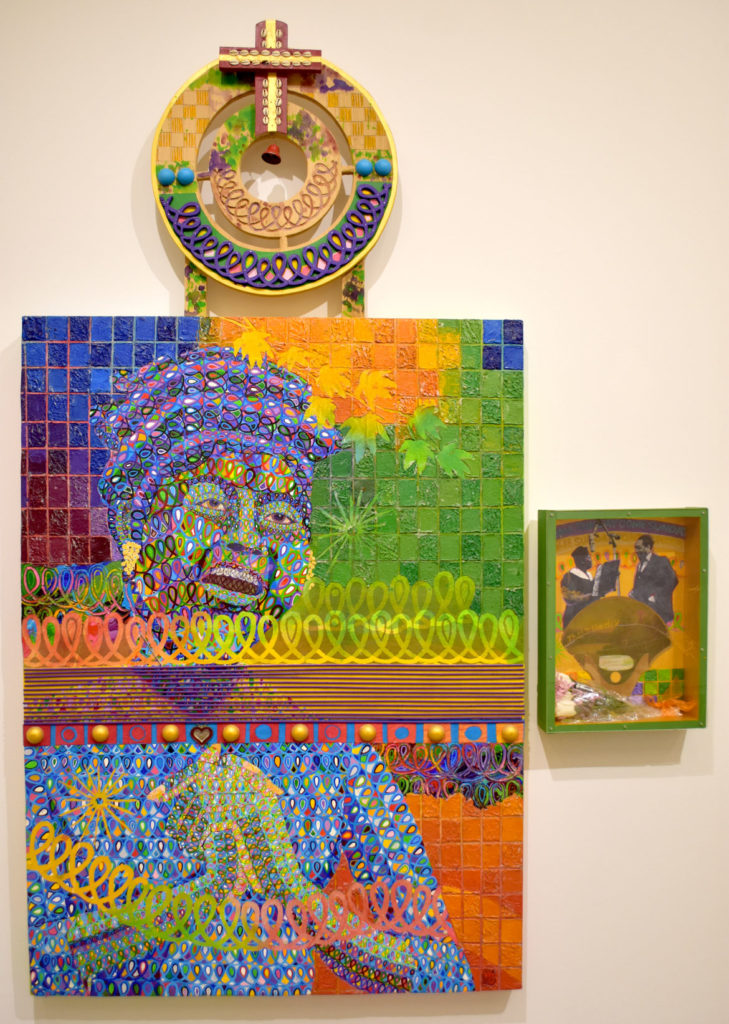
After the success of the mural, the Jarrells opened W.J. Studios and Gallery in Chicago’s Hyde Park. They presented art exhibitions, jazz concerts, readings, performances. And they hosted meetings with Jeff Donaldson, Gerald Williams and Barbara Jones-Hogu, which would lead to the formation of AfriCOBRA in 1968. In their manifesto, they outlined their guiding principles: “Expressive awesomeness,” positive images of Black culture, African-inspired symmetry and rhythm, commitment to the struggles of African peoples, affordable art, “shine” (“the rich luster of a just-washed ‘fro, or spit-shined shoes, of de-ashened elbows and knees and noses), and bold “cool-ade colors.”
”We reflected, and still do, on our heritage, our roots and our strength,” Ms. Jarrell told The New York Times last year. ”All too often we were thought of as being a people without a beginning or not knowing where our roots were.”
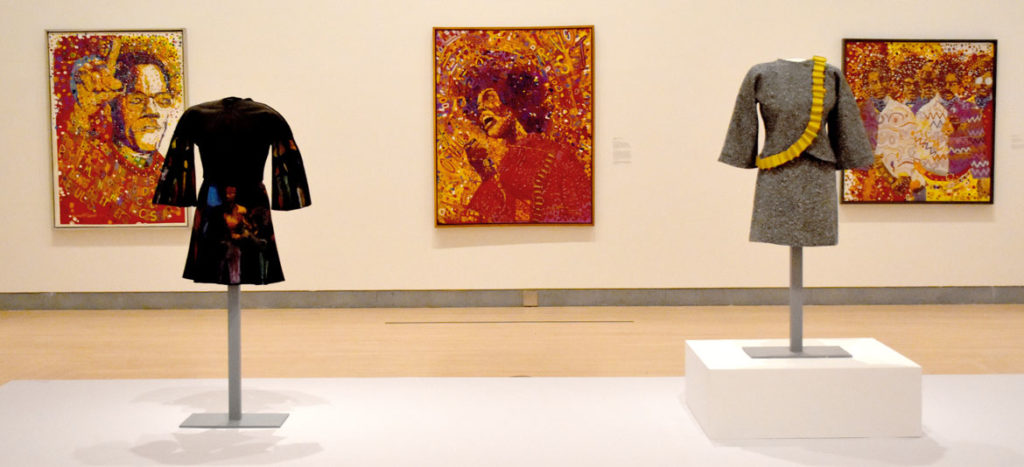
The results might be called psychedelic Black Power art. AfriCOBRA critiqued racist America’s attacks on Blacks, while also presenting positive images in support of Black families and the African American community—with titles like “Uphold Your Men” and “Black Children Keep Your Spirits Free” and “Black Men We Need You” (including the text: “Black Men Preserve Our Race Leave White Bitches Alone”).
The group soon expanded to include Napoleon Jones-Henderson and Nelson Stevens, then Sherman Beck, Carolyn Lawrence, Omar Lama, Howard Mallory Jr. and Frank Smith.

In the early 1970s, Jarrell’s rainbow-hued compositions of city life and his family developed into iconic, dazzling, kalediscopic, text-filled paintings of Malcolm X (it reads: “I believe in anything necessary to correct unjust conditions”), Angela Davis, (“I have given my life to the struggle. If I have to lose my life in the struggle that’s the way it will have to be”), and Black Panthers. “We presented their positive strength as leaders,” Jarrell said in the catalogue for “Soul of a Nation.”
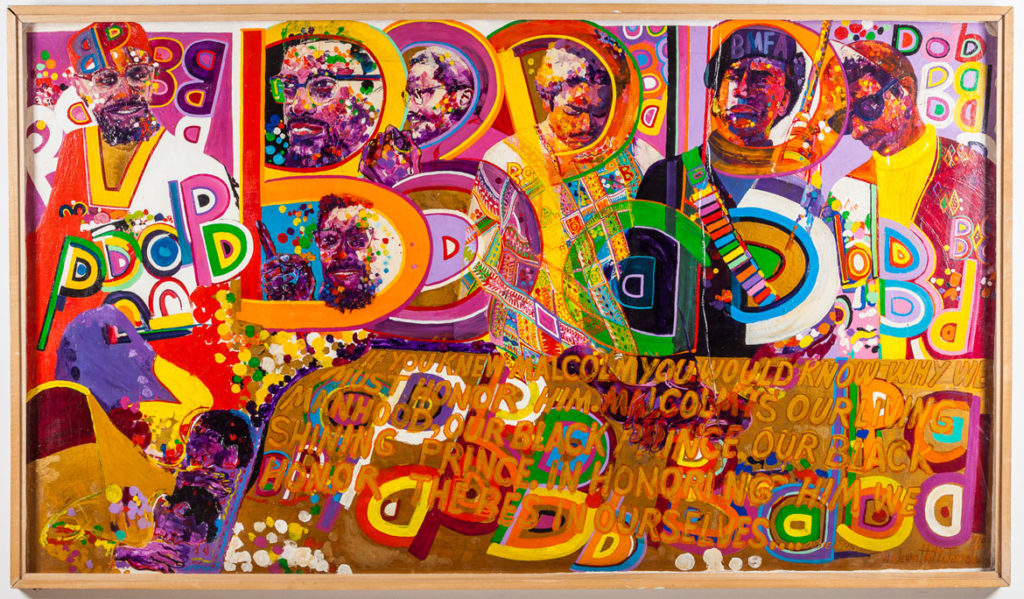
“It is Nation Time and we are searching,” Donaldson said on a poster for AfriCOBRA’s June 1970 exhibition “Ten in Search of a Nation” at New York’s Studio Museum in Harlem. (The exhibition toured to Boston’s Museum of the National Center of Afro-American Artists then Chicago’s Black Expo.) “In the spirit of Nation-ness we are examining the roots and branches of our African Family Tree for the seeable which is most expressive of our people/art. We are trying to make images inspired by sublimely SuPerreal African people/experience in the U.S.A. Images that all African people can dig on directly. Images that jar the senses and cause movement. Poster art. Images designed for mass production. Inexpensive. We want everybody to have some.”
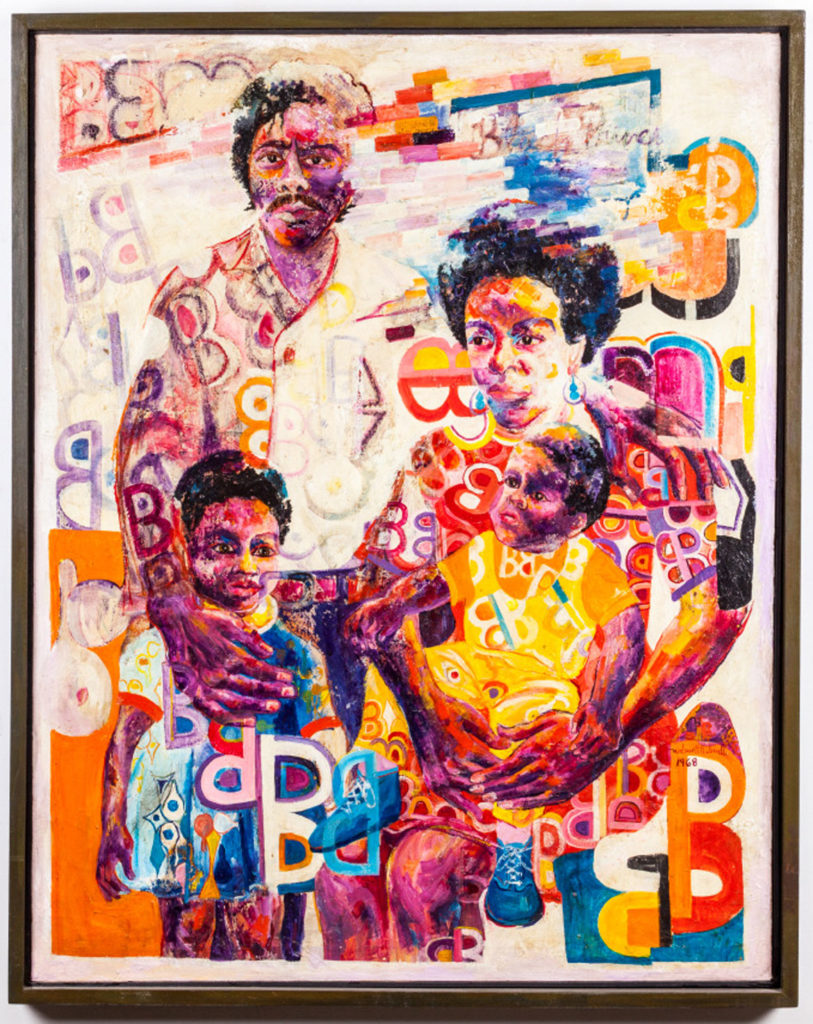
The Jarrell family moved briefly to Boston, then in 1973 to Washington, D.C., where they both studied at Howard University, and Wadsworth also taught art and photography. After Jarrell earned his master’s degree, they moved to Athens, Georgia, in 1977, where Jarrell became a tenured professor at the University of Georgia.
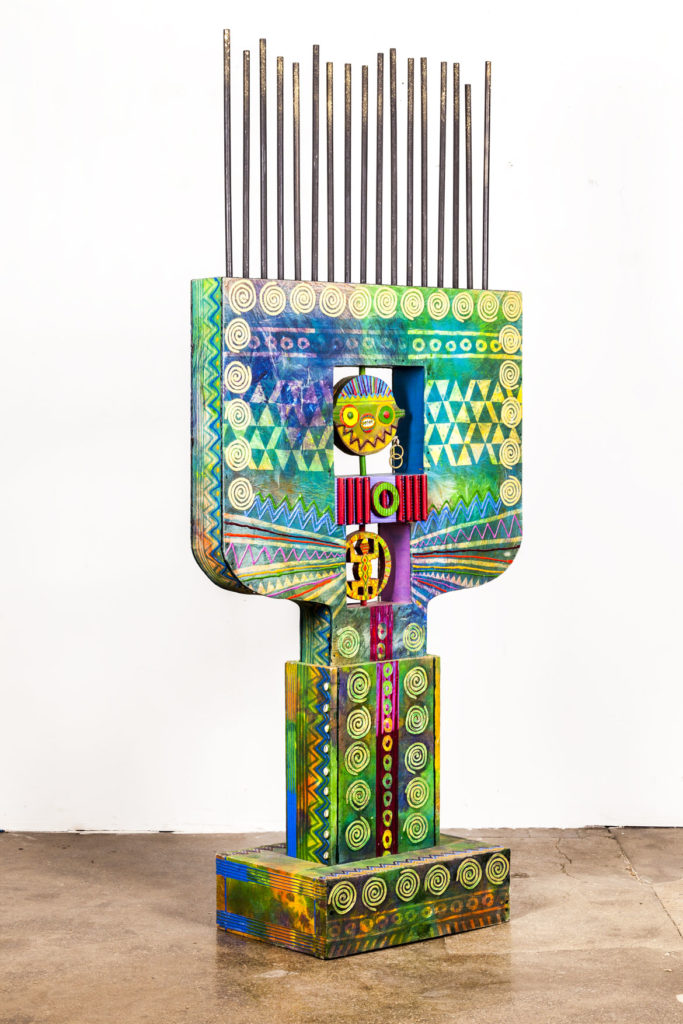

Beginning in the 1970s, Jarrell increasingly incorporated African motifs—as in his 1993 sculpture “Extolling a Djwoke Headress,” which suggests a monument to the hair pick, and his 1995 sculptures “Yeah But, Can You Fight?,” which resemble shields. His art continued to honor family and Black heroes, from jazz musicians (John Coltrane, Duke Ellington, Mahalia Jackson, Billie Holiday) to 19th century Black thoroughbred horse racing riders and trainers. He continued to paint murals. And he kept in touch with AfriCOBRA colleagues, attending meetings in D.C. in the 1970s. The collective remains active—and has been attracting increasing attention as it’s passed the 50th anniversary of its founding.
“A black artist can’t afford the luxury of taking a pile of dirt and calling it art. I need to relate to my people and teach them what’s going on,” Jarrell told the Athens Daily News after finishing a mural at a community center in Athens, Georgia, in 1978. “We fell it is important for black artists to have contributed a school of art, a school of thought which could be used for years as references for Black kids. We would never be called mainstream artists.”
If this is the kind of coverage of arts, cultures and activisms you appreciate, please support Wonderland by contributing to Wonderland on Patreon. And sign up for our free, weekly newsletter so that you don’t miss any of our reporting.

